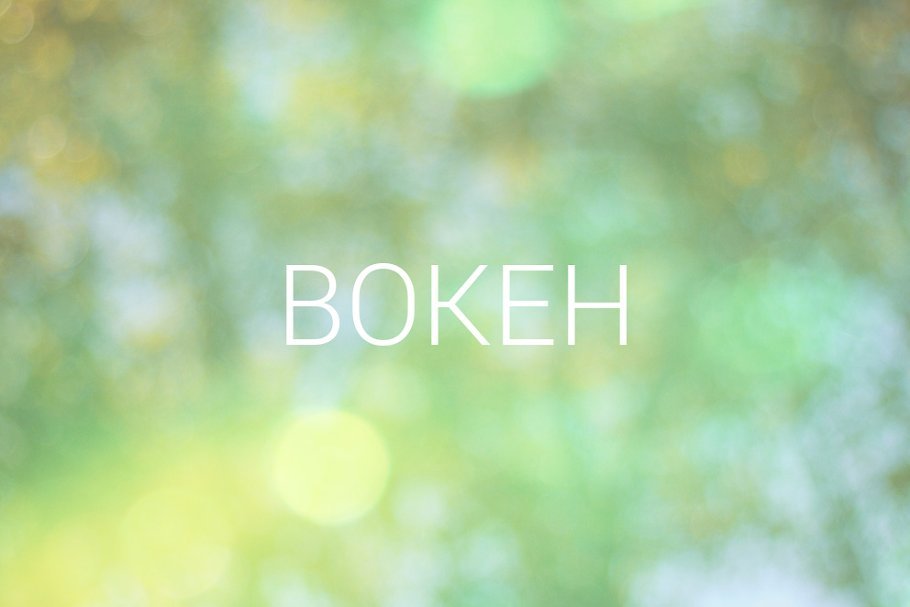Bokeh Kings
Tips & TechniquesViewfinderOct 10 Written By Gary Hough
Wikipedia defines “Bokeh (usually pronounced Boc-ah) as the blur or aesthetic quality of the blur, in the out-of-focus areas of an image. The term comes from the Japanese word boke, which means “blur” or “haze” or boke-aji (blur quality). It is also defined as the way the lens renders out-of-focus points of light.”
I think I first encountered the term Bokeh many years ago (way back in the 80’s) while in the company of Tom Abrahamsson at one of the many Photokinas we attended together. Tom had recently been to Japan prior to the big show in Germany, and during our usual imbibing of copious amounts of Kölsch, he told me about this new concept of Bokeh which folks in Japan seemed to be obsessed with. As I’m sure both Tom and I were in a bit of a Kölsch beer haze or the tobacco haze which we would encounter on the LOMO stand, I more than likely thought this was very interesting and promptly filed it away somewhere in my mind. Spending time with Tom is like that. You learn of a lot of very interesting things and along the way meet a lot of interesting people and often have new ideas, which seem very interesting as well, at least at the time. This is more or less how we dreamed up the concept of the LHSA Black Paint camera.
As time passed, I would hear more about this mysterious Bokeh and that there were in fact both “good” and “bad” forms of Bokeh. I would also hear about certain lenses being Bokeh Kings. In these discussions, some version of the Noctilux lens would always be mentioned. Usually there was also mention of the Summarex and the mighty Thambar, whose sole reason for being was in rendering images mainly out-of-focus (especially in the highlights) decades before the term Bokeh was even coined. It took the passage of one World War, the Cold War and two police-action non-wars for the world to come around to Max Berek’s forward thinking on the subject!
With the advent of the internet and the many Leica themed and based online fora, I once again became very aware of this Bokeh phenomenon. Occasionally, someone would post some images of one or two lenses they had used in the field extolling the virtues of the Bokeh they observed, and then other folks would comment good or bad. Digital media and the internet really provides an efficient way of seeing and evaluating examples of such a nebulous concept as Bokeh. Last Fall, I stumbled upon a little experiment on the Club Snap forum where they had camped out in a bar with some good Scotch and taken a number of photos of a still-life vignette (some liquor bottles, a glass with ice in it, out of focus bright lights in the background) and shot a number of 50mm lenses wide-open to capture and attempt to evaluate each lenses Bokeh. This led me to propose at last Fall’s board meeting in San Francisco that we try out this little exercise on our own as part of the festivities in Dearborn! To promote this event, I thought what could be better than doing a little article in Viewfinder on Bokeh to introduce LHSA members to the concept? I would shoot some sort of vignette with all of the fast lenses (faster lenses show more and better Bokeh than slow lenses) I could lay my hands on with my M9-P locked down on a heavy tripod to come up with some comparison among them as to their Bokeh qualities. I took some sample photos of my little set-up with a 20” high Geisha Doll that has been in my family for over fifty years to test the concept. I used the Geisha Doll as my subject for several reasons. First of all, I thought it appropriate to use a Japanese themed subject to illustrate a Japanese concept. Secondly, she was three dimensional as most subjects are in real life (unlike Air Force Aerial Test Targets or newsprint, which only really test field flatness and resolution with a subject matter few of us would choose in real life) with a lot of detail and texture in her costume. And third, by using an inanimate object for a subject, she would not get tired, move or complain about the project like human subjects tend to do!
https://leicasocietyinternational.org/blog/2014/10/bokeh-kings/#myaccount
散景王
提示與技巧取景器
10 月 10 日
作者:加里霍夫
維基百科將“散景(通常發音為 Boc-ah)定義為圖像的失焦區域中的模糊或模糊的美學質量。該術語來自日語單詞boke,意思是“模糊”或“霧霾”或boke-aji(模糊質量)。它也被定義為鏡頭渲染散焦點的方式。”
我想我在多年前(早在 80 年代)第一次遇到 Bokeh 這個詞是在我們一起參加的眾多 Photokinas 之一的 Tom Abrahamsson 的陪伴下。湯姆最近在德國的大型演出之前去過日本,在我們通常喝大量的科隆時,他告訴我日本人似乎痴迷於這種新的散景概念。我確信湯姆和我都處於科隆啤酒或我們在 LOMO 展台上會遇到的煙草煙霧中,我很可能認為這很有趣,並迅速將其歸檔在我腦海中的某個地方。與湯姆共度時光就是這樣。你學到了很多非常有趣的東西,一路上遇到了很多有趣的人,並且經常有新的想法,這看起來也很有趣,至少在當時是這樣。這或多或少是我們構想 LHSA Black Paint 相機概念的方式。
隨著時間的流逝,我會聽到更多關於這種神秘散景的信息,實際上散景有“好”和“壞”兩種形式。我還會聽說某些鏡頭是 Bokeh Kings。在這些討論中,總會提到某些版本的夜光鏡頭。通常還會提到 Summarex 和強大的 Thambar,它們存在的唯一原因是在散景這個術語出現之前的幾十年裡渲染圖像主要是失焦(尤其是在高光中)。經歷了一場世界大戰、冷戰和兩次警察行動的非戰爭,世界才開始接受 Max Berek 在這個問題上的前瞻性思考!
隨著互聯網和許多以徠卡為主題的在線論壇的出現,我再次意識到這種散景現象。有時,有人會發布一些他們在該領域使用過的一兩個鏡頭的圖像,以讚美他們觀察到的散景的優點,然後其他人會評論好壞。數字媒體和互聯網確實提供了一種有效的方式來查看和評估像散景這樣模糊概念的例子。去年秋天,我在 Club Snap 論壇上偶然發現了一個小實驗,他們在酒吧里露營,喝了一些不錯的蘇格蘭威士忌,並拍攝了一些靜物小插曲的照片(一些酒瓶,一個裝有冰塊的玻璃杯,背景中的亮光失焦)並拍攝了一些全開的 50mm 鏡頭以捕捉並嘗試評估每個鏡頭的散景。這促使我在去年秋季在舊金山舉行的董事會會議上提議,我們自己嘗試這個小練習,作為迪爾伯恩慶祝活動的一部分!為了宣傳這個活動,我想有什麼比在 Viewfinder on Bokeh 上寫一篇小文章向 LHSA 成員介紹這個概念更好的了?我會用所有的快鏡頭拍攝一些暈影(快鏡頭比慢鏡頭顯示更多更好的散景)我可以把手放在我的 M9-P 鎖定在一個沉重的三腳架上,以便在它們之間進行一些比較至於他們的散景品質。我為我的小裝置拍攝了一些樣本照片,上面有一個 20 英寸高的藝妓娃娃,這個娃娃已經在我家生活了 50 多年,以測試這個概念。我使用藝妓娃娃作為我的主題有幾個原因。首先,我認為使用日本主題來說明日本概念是合適的。其次,她是三維的,因為現實生活中的大多數主題都是如此(不像空軍空中測試目標或新聞紙,它只用我們很少有人會在現實生活中選擇的主題來真正測試場地平坦度和分辨率),並且有很多細節和她服裝的質地。第三,通過使用無生命的物體作為主體,她不會像人類主體那樣感到疲倦、移動或抱怨這個項目!
Sàn jǐng wáng
